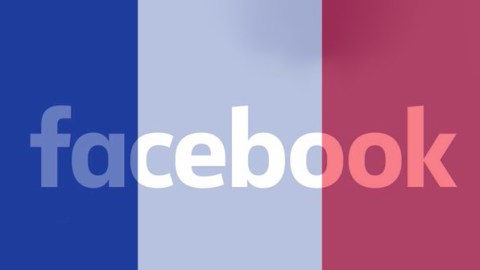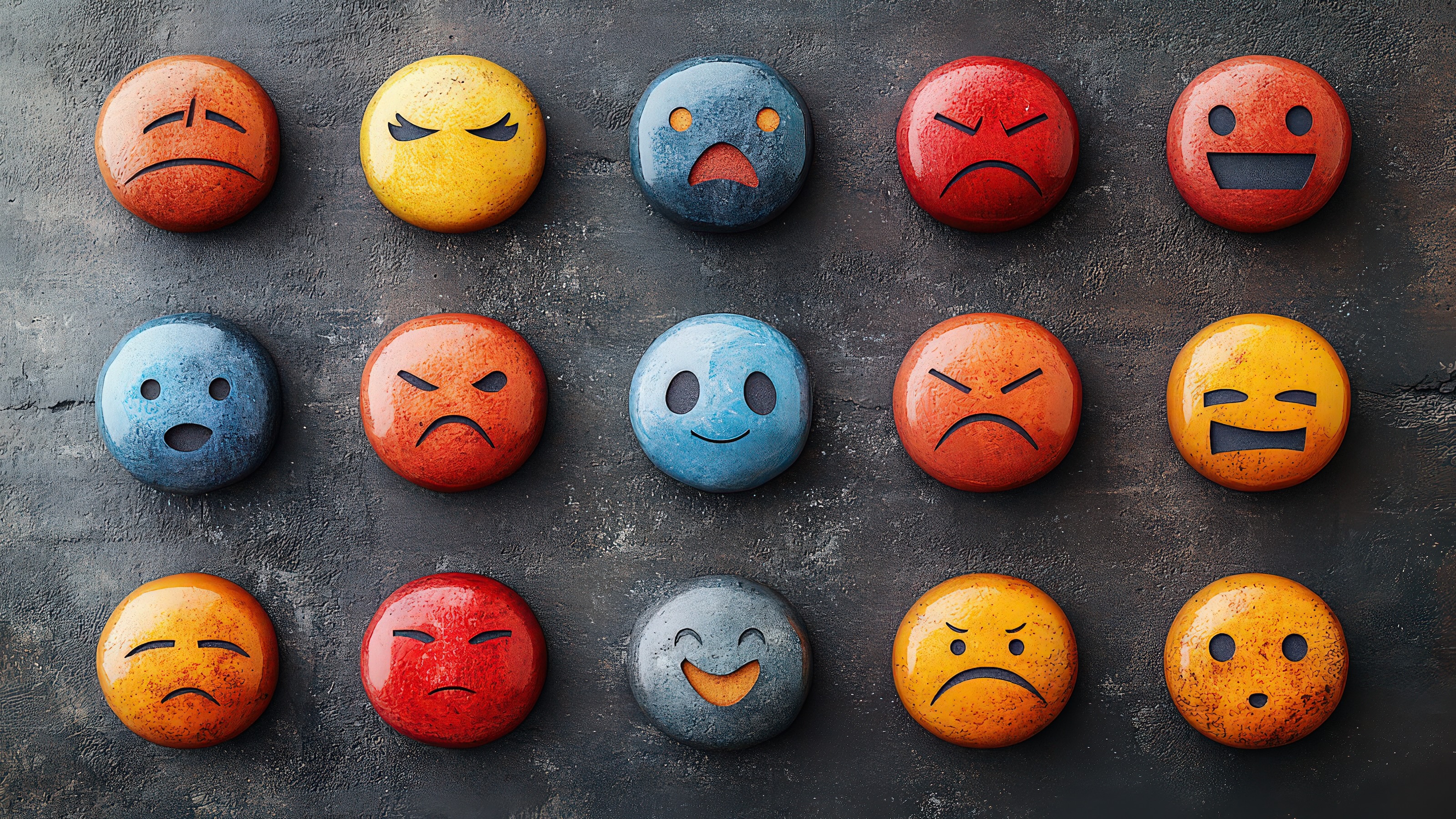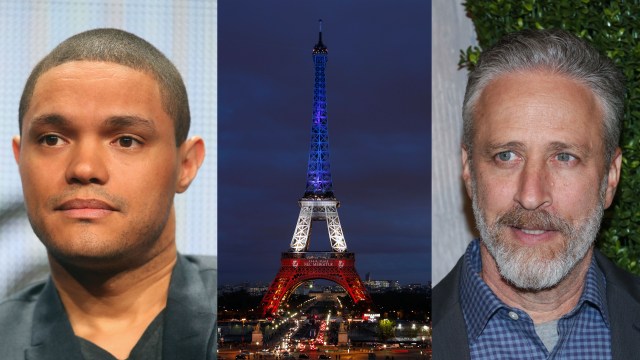Let’s Review the History of the French Flag Before Passing Judgment on Facebook

When words failed Friday night as news of the Paris attacks spread, I, like so many others, turned to the Internet for words and images to make sense of the senselessness, finding myself eventually landing at Facebook — the virtual global village, for good or ill. Facebook users and Facebook itself quickly responded to the tragedy. Almost as quickly, critics questioned the response. Why did Paris deserve a “safety check” button while Beirut, victim of its own terrorist attack, did not? Why could people merge their profile photo with the French flag in solidarity when the real solution seemed less nationalism and more global unity? To those well-meaning critics I respond, let the French flag fly on Facebook. It flies for all of us. It flies for life.
Understandably, emotions and tempers ran hot in the aftermath of the Paris attacks. Facebook founder and CEO Mark Zuckerberg responded quickly to the choice of a “safety check” button on Facebook for Paris, but not Beirut. The “safety check” had previously been used solely in response to “natural disasters,” but the unnatural disaster of Friday night prompted Facebook to revise its policy. Paris set a new precedent, sadly too late for Beirut. In fact, the proximity in time between the Beirut and Paris attacks may have been the tipping point policy-wise. “We care about all people equally,” Zuckerberg offered to his critics, “and we will work hard to help people suffering in as many of these situations as we can.”
When Zuckerberg announced his explanation on Facebook, he’d already merged his profile picture with the French flag, a feature Facebook has used for various causes, including the pride flag the LGBT rights in America. The Independent’s Lulu Nunn took offense at that action:
“Paint-by-numbers solidarity when it’s foisted on you by one of the most powerful companies in the world is simply not the way to help a traumatised nation in shock after murder,” Nunn commented acidly. “Got a French flag on your Facebook profile picture? Congratulations on your corporate white supremacy.”
In contrast, U.S. News and World Report’s Jonathan Rothermel offered a more measured response about the Facebook flag issue. Rothermel argues that it’s not Facebook’s flag feature that’s wrong (a la Nunn), but rather their choice in flag. “A world in which users on social media overlay their profile pictures with the powder blue flag of the United Nations would send an unequivocal message to the terrorist organization,” Rothermel counters. “No matter one’s nationality, whether it is French, Lebanese, Russian, or Turkish, human beings have a universal right to live securely and free, and as an international community, the world stands together against the Islamic State group.” I agree wholeheartedly with Rothermel’s sentiment, but would argue that the French flag is not just as good as the United Nations’ flag at this moment. In fact, it’s better.

The French blue, white, and red tricolor flag originated from the red and blue cockade revolutionaries wore during the French Revolution. After some tinkering, including a redesign by Napoleon Bonaparte’s favorite artist Jacques-Louis David in 1794, the tricolor flew proudly over France until 1815’s Bourbon restoration. The 1830 July Revolution brought down the royal flag once more and the tricolor’s been flying ever since. Artists, especially the rebellious avant-garde, tend to shy away from overt nationalism, but the French flag’s rebellious roots often sway them. In 1878, the people’s Republican government announced a day of celebration after fighting off the advances of the conservative, royalist party. Claude Monet’s La rue Montorgueil à Paris. Fête du 30 juin 1878 (The Rue Montorgueil in Paris. Celebration of June 30, 1878) (shown above) documents that day of national pride steeped in the tricolor. Monet paints the scene from the perspective of someone looking out a window rather than participating in the fun. It’s a perfect image of how the French flag can stand for both freedom and unity as well as the freedom to stand apart. Those who think that anti-Muslim sentiment (casting them as the “eternal outsiders”) belongs in France (or anywhere else), should look at this appreciation of the flag by a true outsider.

But you don’t even need to be French to appreciate the Frenchness of the flag. American Impressionist Childe Hassam not only admired the art of his French inspirations (including Monet), but also the culture of France itself. When America entered World War I in May 1917, American, British, and French representatives paraded down Fifth Avenue, renamed “Avenue of the Allies.” Hassam’s Allies Day, May 1917 (shown above) captures the spirit of the day through the intermingling of national flags. The event organizers asked onlookers to “show your colors” for the day. As in Hassam’s picture, the best way to show unity is to display our diversity. Rather than the U.N.’s pale blue, as Rothermel suggests, the best way to fight back is to go big and bold, to assault the eye with color and difference. “We are many,” the clashing flags say. “But we are still one.”

As we have learned over the past week, Paris and France are full of paradoxes (like every other spot on Earth). Conflicting political parties offer conflicting solutions in regards to security, immigration, and retribution. A similar paradox sits at the center of Eugene Delacroix’s now-iconic La Liberté guidant le peuple (Liberty Leading the People) (shown above). When the tricolor rose again for good in 1830 after the July Revolution, Delacroix painted at the center of the fray, Marianne — the traditional female embodiment of liberty in France — leading the pack with a flagpole in her right hand and a musket in her left. For me, Delacroix’s painting perfectly captures all the options at hand for France. On one hand, we have the great French tradition of live and let live the flag embodies. On the other, military revenge, such as the French bombings targeting ISIS in Syria already carried out. Those bombings may provide a momentary catharsis, but, as the U.S. learned after 9/11, such moments are fleeting, but have a hangover that can drag on for decades.

Perhaps the tipping point for that choice between the flag and the musket lies in the voluptuously exposed breasts of the heroic woman. How “French” is it to have your symbol of freedom be a topless woman? She is France, but she is also sex, love, passion, and fertile life itself. Comedian John Oliver’s sublimely profanity-laced rant on ISIS (NSFW) hilariously captures this sentiment in Delacroix’s painting. “That,” Oliver says, referring to a pile of French pastry known as a croque-en-bouche (shown above) “is a French freedom tower!” Pick the “dish” of your choice, but both offer the delicious pleasures of freedom and life. Too often we in the West see our Greco-Roman roots too soberly as all Socrates, all the time. France and its flag remind us that they gave us Bacchus, too.
Last Friday’s attacks recalled the Charlie Hebdo attacks just this past January. Rightfully, Charlie Hebdo responded with a characteristically vulgar cover showing a Frenchmen guzzling champagne blissfully unware that it’s pouring out cartoonishly from his bullet-riddled body. “They have guns,” the French caption reads. “We have champagne!” Similarly, French cartoonist Joann Sfarposted a series of images with his take on the proper response. “Friends from the whole world, thank you for #prayforParis, but we don’t need more religion!” Sfar writes. “Our faith goes to music! Kissing! Life! Champagne and joy! #Parisisaboutlife.” So, drink up life and drink to life (preferably with a French vintage)! Facebook was right to fly the French flag. It is the flag of many things (as all flags are), but it is ultimately the flag of fighting for the freedom to live your life as fully and fervently as possible. If you fly it in that spirit, you can never go wrong. Vive la France! Vive la vie!
—
[Image at top of post:Eugene Delacroix. La Liberté guidant le peuple (Liberty Leading the People)(detail), 1830. Image source:Wikiart.]
[Please follow me on Twitter (@BobDPictureThis) and Facebook (Art Blog By Bob) for more art news and views.]





